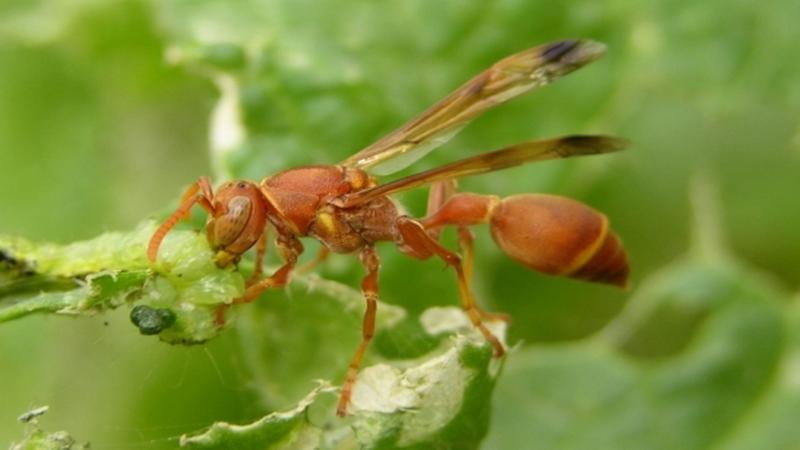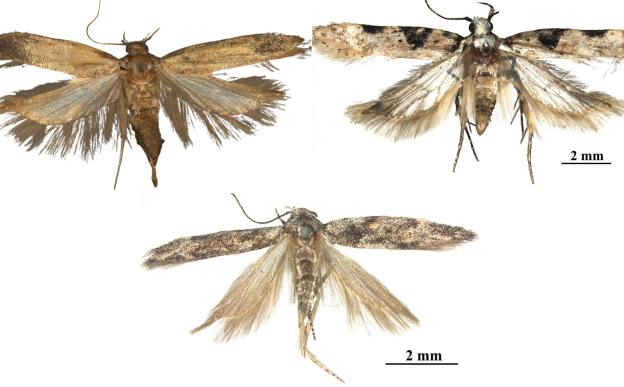
Paper wasps are a group of wasps that have a defined social organisation in their nests. They get their names from the fact that their nests are built of paper made by chewing cellulose and mixing it with saliva. With over hundreds of wasps living together in a small nest, one would expect that they would be cramped all over the place. However, it turns out that many other insects, like ants and bumblebees, have a specific place for different inhabitants within their nests.
In a recent study, researchers from the Indian Institute of Science, Bengaluru, have shown that Indian paper wasps (Ropalidia marginata) also distribute themselves non-randomly in their nests. This arrangement, the research shows, facilitates the efficient exchange of food and avoids the spread of infections. The study, authored by PhD student Nitika Sharma and her mentor Prof Raghavendra Gadagkar, published in the journal Proceedings of the Royal Society B, was funded by the Ministry of Environment, Forests and Climate Change, Department of Science and Technology (DST), Science and Engineering Research Board(SERB), Department of Biotechnology (DBT) and the Council of Scientific and Industrial Research (CSIR).
Paper wasps are eusocial insects, where adults live in groups and take care of the young together. The colony is dominated by a queen wasp, who lays eggs. However, unlike ants or honey bees, they are primitively eusocial and have no morphological difference between the queen and the female workers.
"In general, much more research has been done on ants and bees and rather less on wasps. We chose to work on the wasps because we expected that they might not display non-random space use. Thus, finding non-random space use in the wasps was a pleasant surprise," says Prof Raghavendra Gadagkar. He is a professor at the Centre for Ecological Sciences, Indian Institute of Science, Bengaluru.
The researchers collected six nests of paper wasps and set up video cameras to watch their behaviour. They coded each wasp with a unique colour and tracked their locations in the nest. Areas of frequent use or 'core areas', in which wasps spent more than 50% of their time, were identified. Their observations showed that these wasps preferred certain areas within their nests where they liked to hang around, rather than randomly choose a place.

Nest of Ropalidia marginata. Image credits - Abhadra, under Wikimedia Commons CC BY 2.5
The researchers then compiled their observations from similar studies on ants and bumblebees to explain their findings. They found that this non-random use of space in their nests may influence how they transfer food within the nest. The researchers noticed that the identified 'core areas' were distributed based on where the larvae are found. Interestingly, the larvae are distributed randomly in the nest. The feeder wasps, which fed the larvae, used core areas, which were larger than other regions in the nest. This strategy may help them access all the randomly distributed larvae and feed them efficiently, say the researchers.
The study also noticed some behavioural observations of the queen wasp. She actively avoided forager wasps, who approached her. Forager wasps, who are the only wasps that leave the nest to gather nectar, are highly susceptible to external infections. Since the queen is the only wasp in the colony who lays eggs, she is also the most evolutionarily valuable to the colony. Hence, she interacts with as few wasps as possible, minimising her chances of being infected.
The study shows how paper wasps use the space in their nest to maximise feeding efficiency while minimising the spread of infection.
"As a next step, we would like to explore the efficient mechanism of food distribution in greater detail," says Professor Gadagkar. The researchers want to understand how these wasps distribute food when there is an abundance or scarcity of food. "There are several other fronts at which we are trying to push the boundaries of our knowledge," he concludes.
This article has been run past the researchers, whose work is covered, to ensure accuracy.






